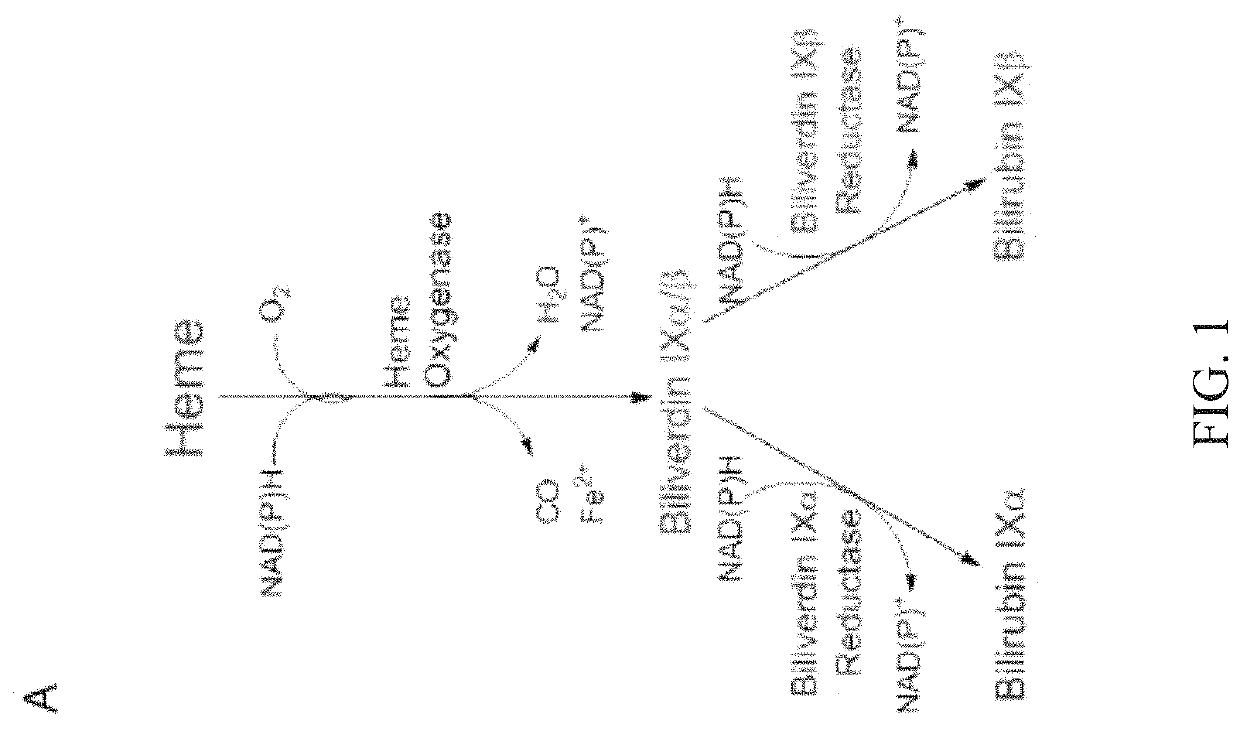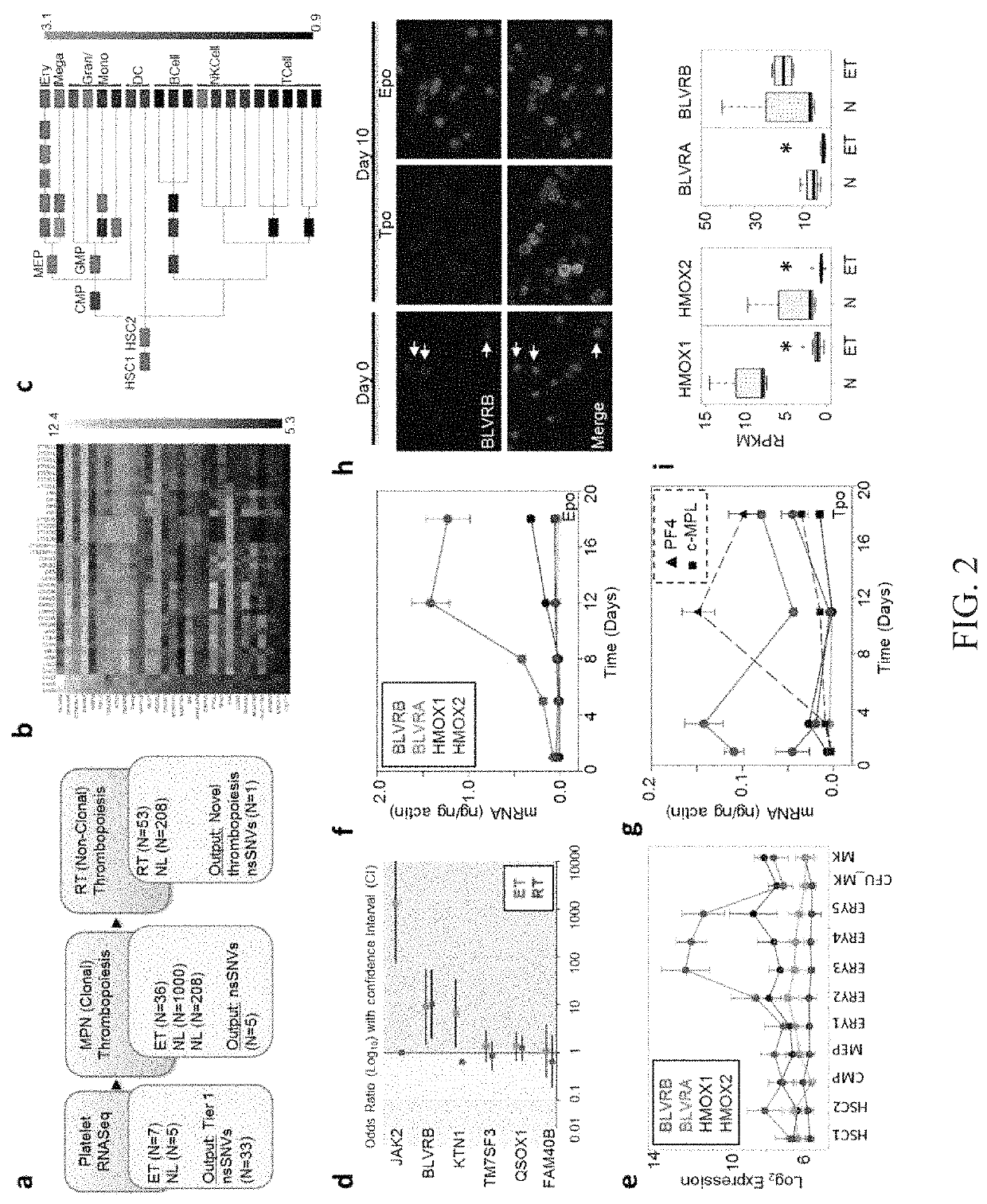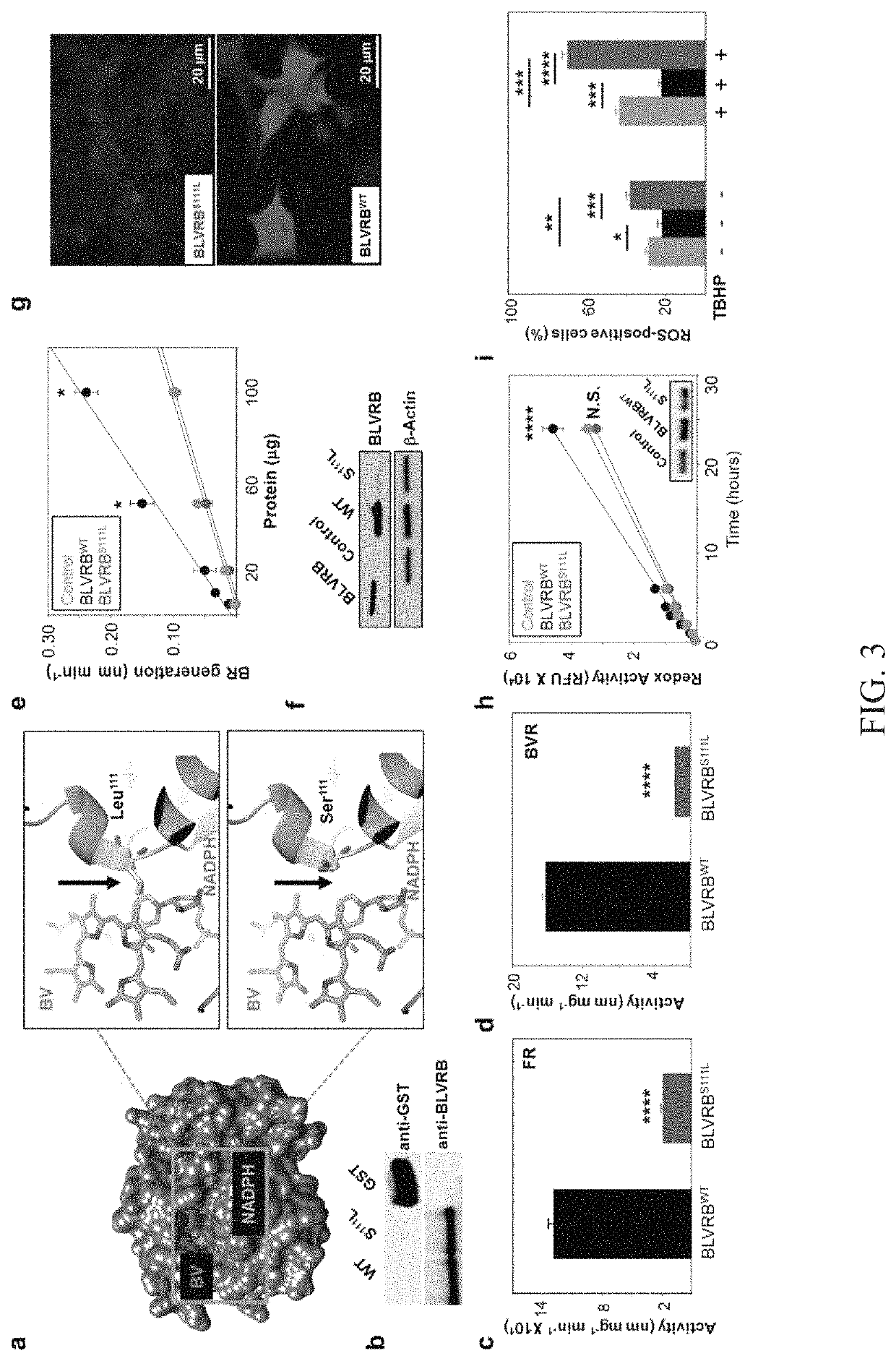Methods for increasing platelet count by inhibiting biliverdin IXβ reductase
a technology of biliverdin ix reductase and platelet count, which is applied in the direction of drug composition, extracellular fluid disorder, genetic material ingredients, etc., can solve the problems of life-threatening hemorrhage, platelet activation, blood clotting, etc., to increase platelet production, increase platelet count, and reduce the enzymatic activity of the enzym
- Summary
- Abstract
- Description
- Claims
- Application Information
AI Technical Summary
Benefits of technology
Problems solved by technology
Method used
Image
Examples
example 1
jects and Data Analyses
[0088]All subjects (myeloproliferative neoplasms (MPN), N=36″: Reactive Thrombocytosis (RT), N=53: or healthy controls, N=2081 were enrolled in an IRB (Institutional Review Board)-approved protocol conducted in accordance with the Declaration of Helsinki (Gnatenko D V, et al. (2010), Blood 115(1):7-14). Informed consent was obtained from all subjects. Large-scale platelet RNA transcriptomic studies and SNV identification were completed using the Illumina HiSeq 2000 platform (100 ng RNA / sample). Leukocytes isolated by density-gradient centrifugation from sodium citrate-treated blood (0.4% v / v final concentration) served as the source of genomic DNA, while CD45 (leukocyte)-depleted platelet-rich plasma (PRP) served as the source of platelet mRNA. Leukocyte contamination of PRP was −5, and the isolation, quantification and quality control of both leukocyte and platelet RNAs was established using an Agilent 2100 Bioanalyzer as previously described. (Gnatenko, D. V...
example 2
RNASeq, Bioinformatic and Genetic Association Analyses
[0090]Large-scale platelet RNA transcriptomic studies and SNV identification were completed using the Illumina HiSeq 2000 platform. Briefly, RNA (100 ng / sample) was captured using two rounds of oligo(dT)-coupled beads, followed by cDNA synthesis, library generation, and DNA Sequencing. FASTQ sequence reads truncated as 50 mers were mapped to the human genome Hg19 (February 2009) GRCh37 build with TopHat (Trapnell, C et al., (2009) Bioinformatics 25, 1105-1111), and normalized mRNA abundance for each transcript was calculated using RPKM (reads per kilobase / 106) models (Mortazavi, A et al., (2008) Nature methods 5, 621-628). Sequencing coverage ranged from 60- to 100-fold establishing sufficient depth for identification of allelic variation with genotypic frequencies approximating Blood 101, 2285-2293). SNV calling was performed using SAMtools (htt: / / samtools.sourceforge.net / ). SNV detection stringency conditions included >20% read...
example 3
ive PCR and Pyrosequencing
[0092]Cellular RNA quantitation was performed using fluorescence-based real-time PCR (polymerase chain reaction) technology (TaqMan Real-Time PCR; Applied Biosystems, Foster City, Calif.). Oligonucleotide primer pairs were generated using Primer3 software (www-genome.wi.mit.edu), designed to generate approximately 200-base pair (bp) PCR products at the same annealing temperature. The primer sequences are shown in Table 1. Purified platelet mRNA (20 ng) was used for first-strand cDNA synthesis using oligo(dT) and SuperScript II reverse transcriptase (Invitrogen). For real-time reverse transcription (RT)-PCR analysis, the RT reaction was equally divided among primer pairs and used in a 40-cycle PCR reaction for each target gene by using the following cycle: 94° C. for 30 seconds, 55° C. for 30 seconds, 72° C. for 1 minute, and 71° C. for 10 seconds (40 cycles total); mRNA levels were quantified by monitoring real-time fluorometric intensity of SYBR green I, a...
PUM
| Property | Measurement | Unit |
|---|---|---|
| pH | aaaaa | aaaaa |
| pH | aaaaa | aaaaa |
| breakdown | aaaaa | aaaaa |
Abstract
Description
Claims
Application Information
 Login to View More
Login to View More - R&D Engineer
- R&D Manager
- IP Professional
- Industry Leading Data Capabilities
- Powerful AI technology
- Patent DNA Extraction
Browse by: Latest US Patents, China's latest patents, Technical Efficacy Thesaurus, Application Domain, Technology Topic, Popular Technical Reports.
© 2024 PatSnap. All rights reserved.Legal|Privacy policy|Modern Slavery Act Transparency Statement|Sitemap|About US| Contact US: help@patsnap.com










